Independence is a city in and the county seat of Buchanan County, Iowa. The city has a total area of 6.22 square miles, of which, 6.08 square miles is land and 0.14 square miles is water. |
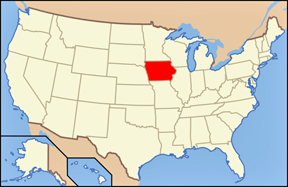
|
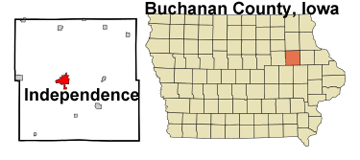
|
 Independence was founded in 1847 near the center of present-day Buchanan County. The original town plat was a simple nine-block grid on the east side of the Wapsipinicon River. The town was intended as an alternative to Quasqueton (then called Quasequetuk), which was the county seat prior to 1847. The village of Independence had fewer than 15 persons when the county seat was transferred there. Independence was founded in 1847 near the center of present-day Buchanan County. The original town plat was a simple nine-block grid on the east side of the Wapsipinicon River. The town was intended as an alternative to Quasqueton (then called Quasequetuk), which was the county seat prior to 1847. The village of Independence had fewer than 15 persons when the county seat was transferred there.
For a few years in the late 1880s and early 1890s, Independence was a nationally known horse-racing center, and was sometimes referred to as the "Lexington of the North" because of the meteoric financial success of Charles W. Williams, a telegraph operator and creamery owner from nearby Jesup, Iowa. Williams purchased in 1885 two mares, each of which within a year gave birth to a stallion. These two stallions, named Axtel and Allerton, went on the set world trotting records, with the result that Williams' earnings enabled him to publish a racing newspaper titled The American Trotter, and to build a large three-story hotel and opera house called The Gedney, and to construct a figure-eight shaped race track on the west edge of town on a large section of land called Rush Park, where he also built a magnificent horse barn, his family mansion, and peripheral structures. The burgeoning community was soon home to other mansions, churches, and even a trolley-car service. His house is still standing, but, in recent years, the Rush Park barn was demolished by a bulldozer, to make way for a fast-food drive-in and an auto parts store. In the years that followed the race track days, the town lost most of its importance when the railroad terminal at Independence was pushed further west to Waterloo, Iowa. |
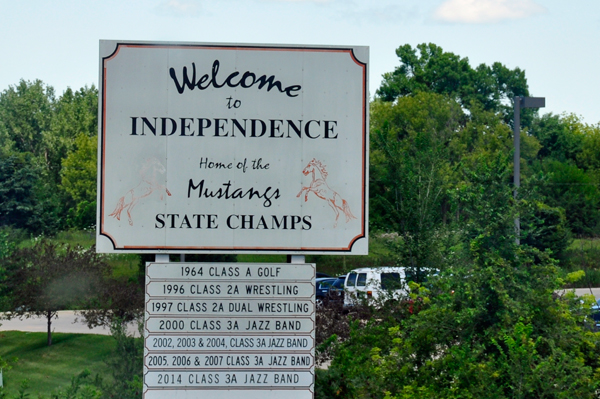
|
Below: On Main Street, on the west bank of the Wapsipinicon, a six-story grist mill was built in 1867. Some of its foundation stones were taken from that of an earlier mill, the New Haven Mill, built in 1854, that was used for wool processing. (Prior to the incorporation of Independence in 1864, a short-lived neighboring village, called New Haven, had grown up on the west side of the river, hence the name New Haven Mill.) The 1867 mill, now called the Wapsipinicon Mill, was a source of electrical energy from 1915 to 1940. Some structural restoration occurred in recent years, and the mill now functions partly as an historical museum.
|
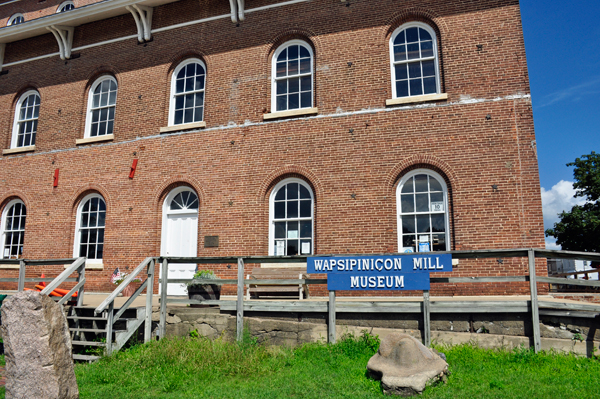 |
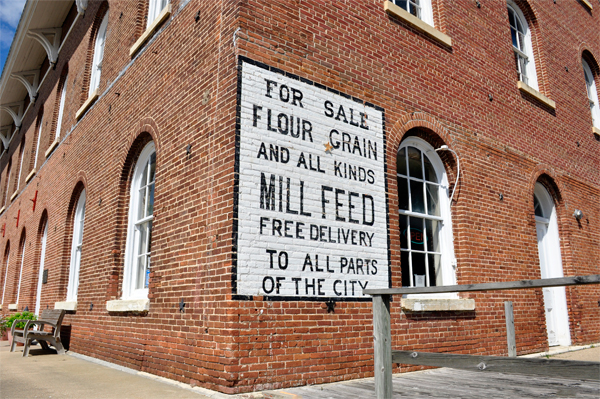 |
Below: The plants in front
of the Veterans Park sign should be trimmed so that the sign could be
read. |
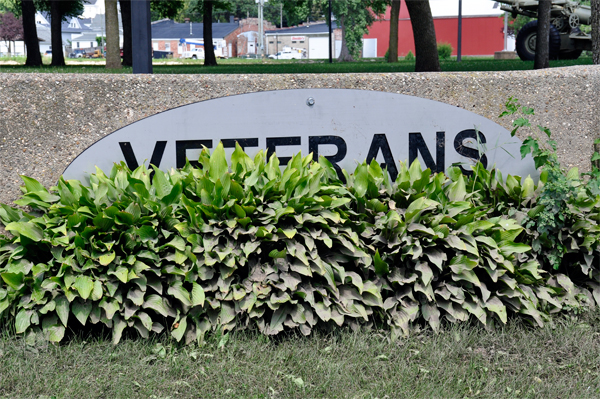 |
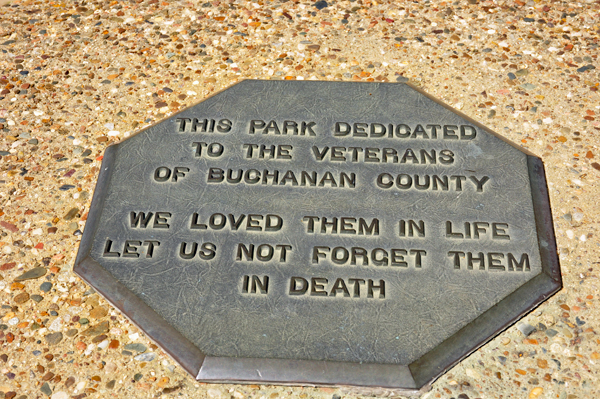 |
Below: Karen Duquette found her first painted rock on a bench in Veterans Park and moved it to the plaque that dedicates the park to the Veterans of Buchanan County (as per directions on the paper that was left with the rock). They had learned about the painted rocks from the local news on TV. |
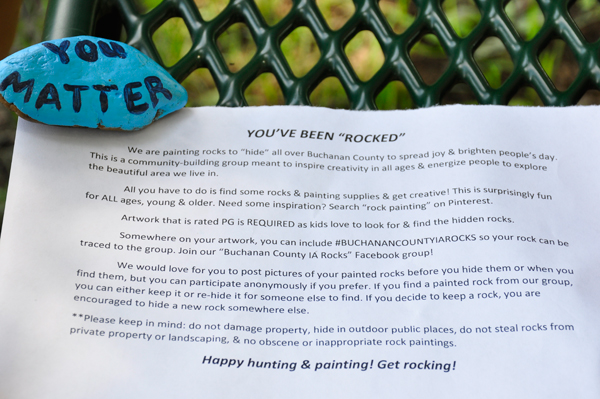 |
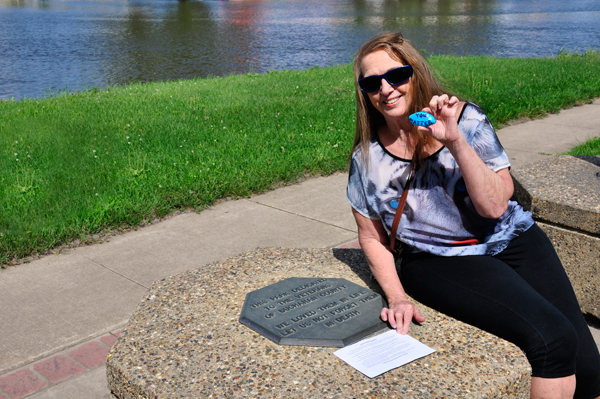 |
Below: Different views of Wapsipinicon Mill Museum and the dam at Wapsipinicon River by Veterans Park. |
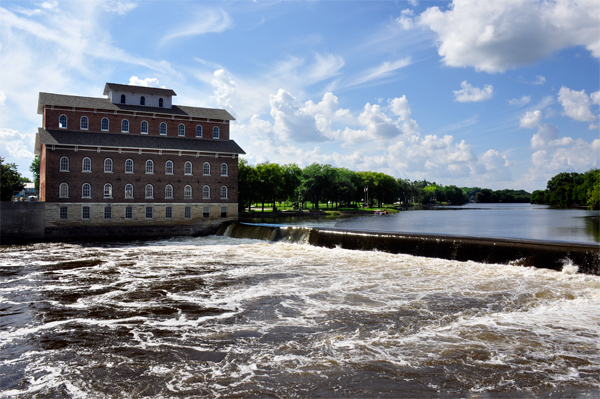
|
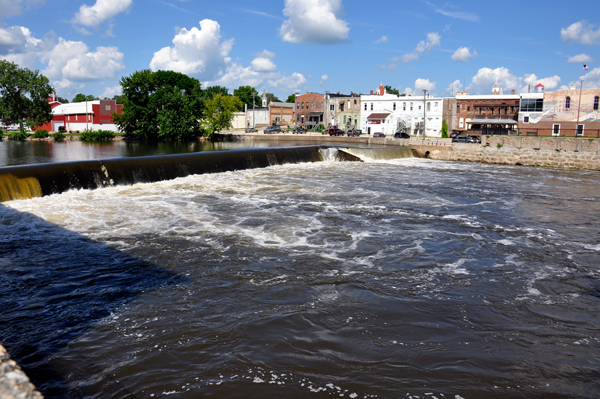
|
Below: The two RV Gypsies
noted that it would be hard for any canoe or boat (IF they are even
allowed on the river) to realize a dam was there as the string of red,
white and blue markers that should be across the river as a warning,
were washed to the side of the river. There were obvious signs that
this area had been flooded recently. |
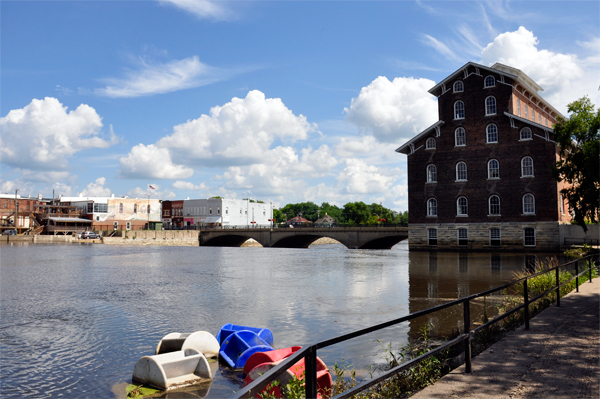
|
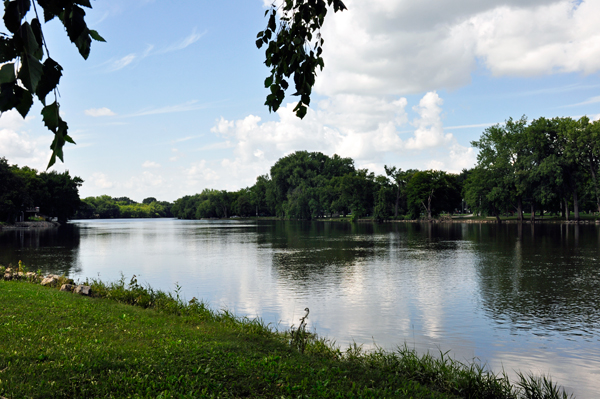
|
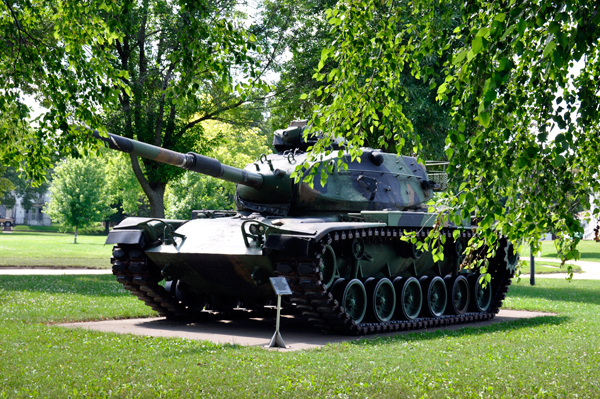
|
Below: Lee Duquette found
his first painted rock by looking inside the "take a book,
leave a book" box. Then Lee moved the rock by the framed Declaration
of Independence at Liberty Park right behind the book box - see
the photos below. (This was across the street from the Mill Museum and
dam). |
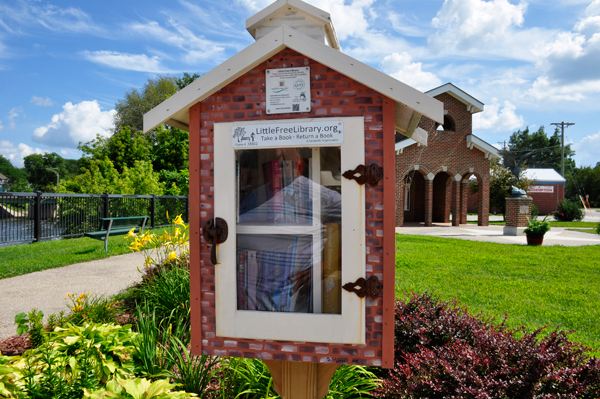
|
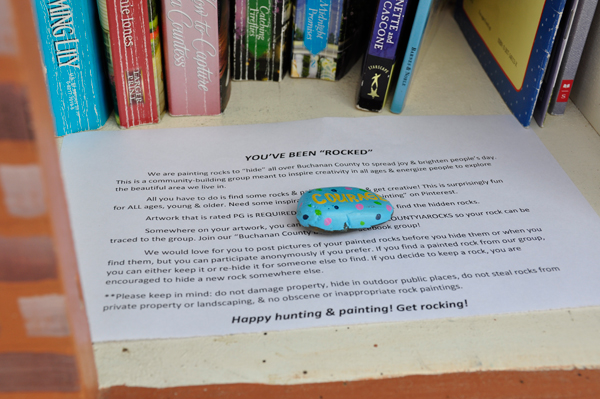
|
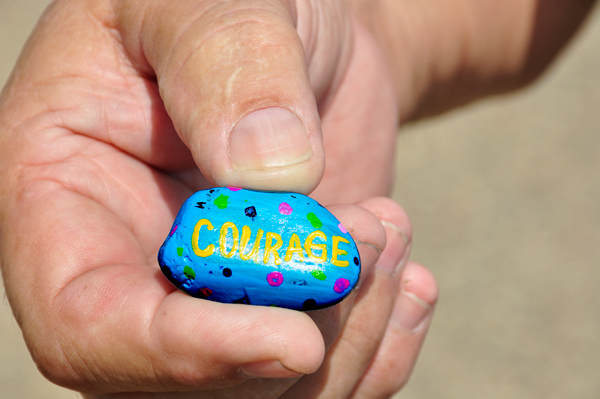 |
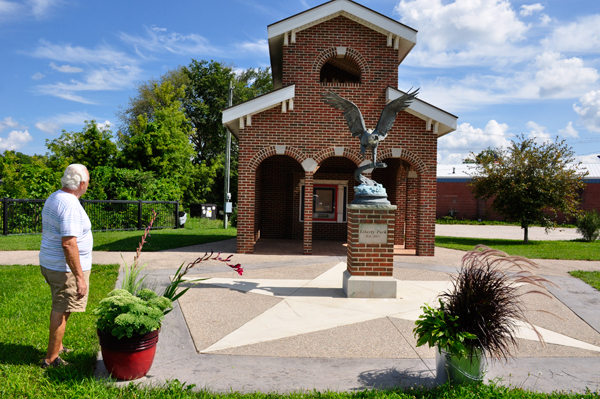
|
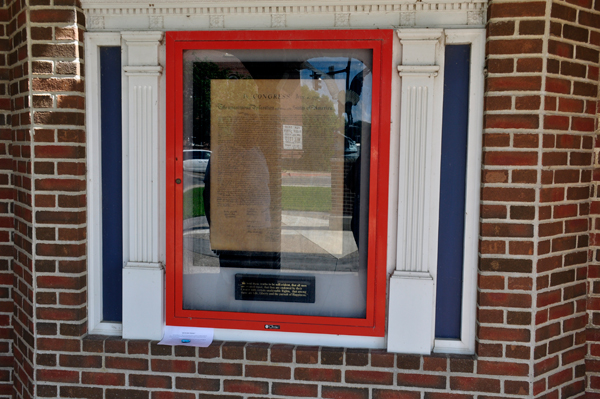 |
Below: A great
mural on a building about Independence Monday June 16, 1890 |
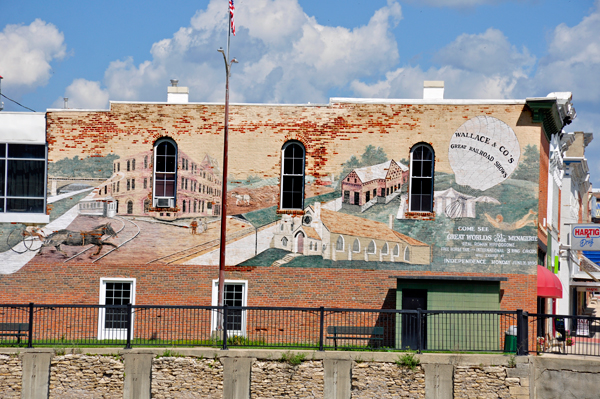
|
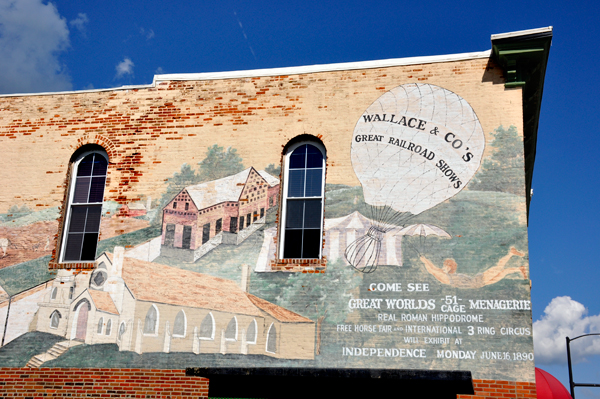
|
Below: A two-sided sign outside of a store on main street. |
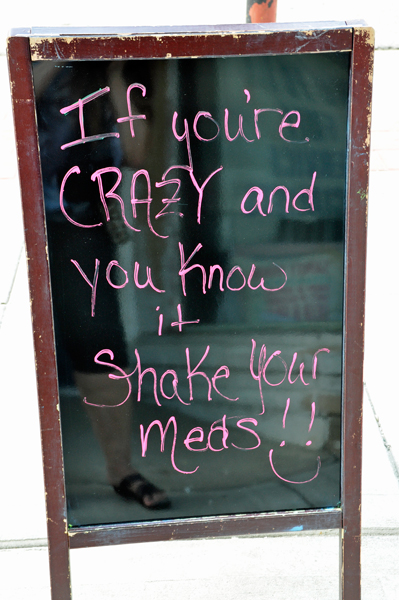
|

|
Below: Independence City Hall. Note: As the two RV Gypsies crossed the street in the official crosswalk shown below, none of the cars in either direction stopped for them. That has been a law in all of the USA states. Shame on them. |
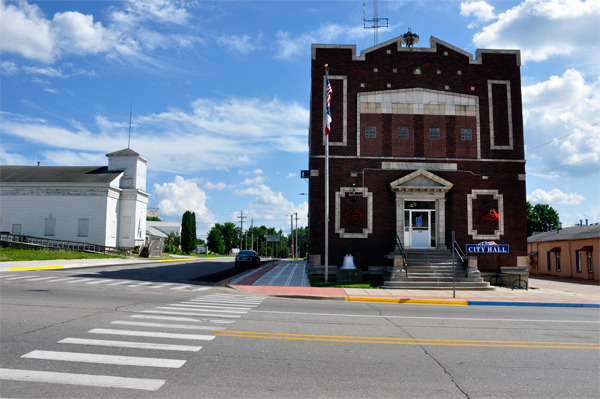
|
Below: Lee Duquette placed one of the painted rocks he found on the door of Independence City Hall. |
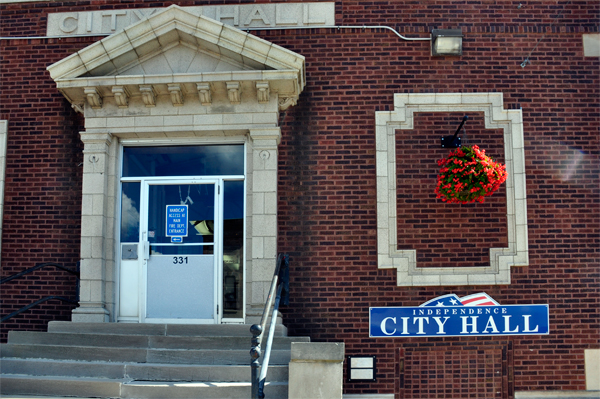
|
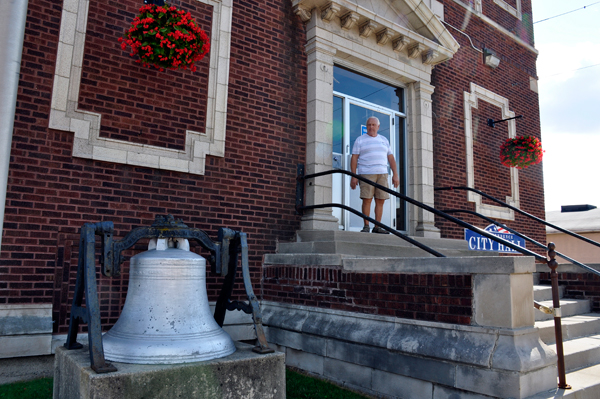
|
Below: Art in front of a house in Independence, Iowa. |
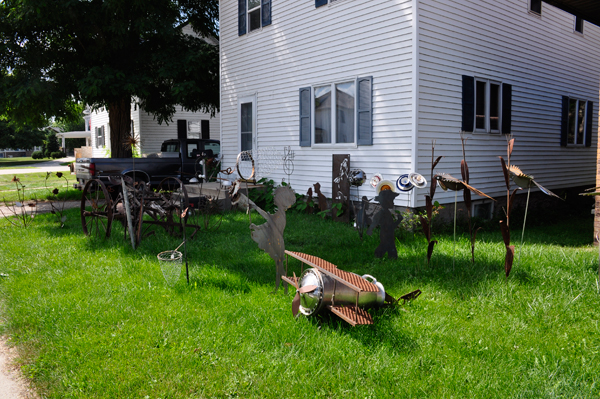
|
Below: Two views of the water tower in Independence, Iowa. |
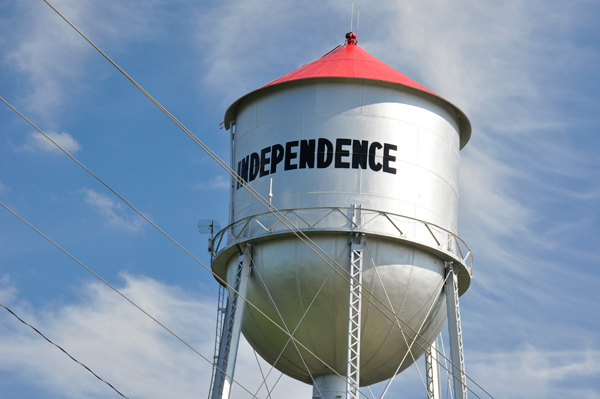
|
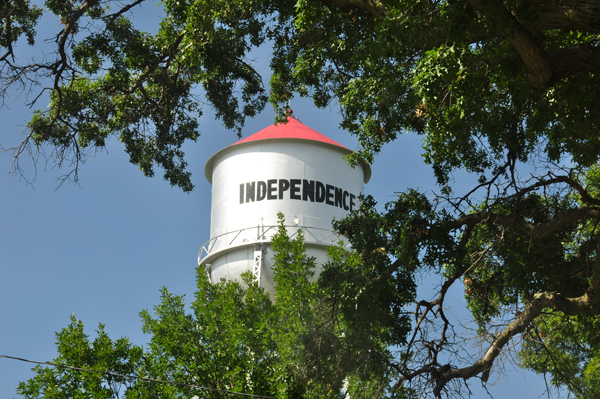
|










 Independence was founded in 1847 near the center of present-day Buchanan County. The original town plat was a simple nine-block grid on the east side of the Wapsipinicon River. The town was intended as an alternative to Quasqueton (then called Quasequetuk), which was the county seat prior to 1847. The village of Independence had fewer than 15 persons when the county seat was transferred there.
Independence was founded in 1847 near the center of present-day Buchanan County. The original town plat was a simple nine-block grid on the east side of the Wapsipinicon River. The town was intended as an alternative to Quasqueton (then called Quasequetuk), which was the county seat prior to 1847. The village of Independence had fewer than 15 persons when the county seat was transferred there.



















